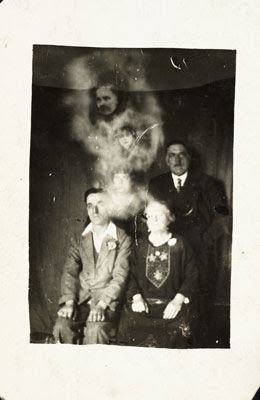In the normal run of things, our
Reminiscence Session group meets every two weeks to view and discuss old pictures from the Museum's mighty photographic archive.
But once a year, something special happens.
Everyone packs a lunch, meets at the Museum entrance, piles onto a bus -- and heads off to investigate the history of photography somewhere outside the Museum walls, on a trip organised by Mandy Tennant, our Audience Development Coordinator, and Victoria Boome, our Learning Programmes Developer.
So on Monday, we took our excited group to Harewood House, the 250-year-old Grade I listed country house near Leeds that's home to the Queen's cousin, the Earl of Harewood. These trips are expressly organised to tie in to the National Media Museum, and in this case the link was Roger Fenton -- more on him later.

We organised the trip with the lovely Harewood House staff, so we had the place to ourselves as we took a clockwise tour of the stunning interior ("This is better than Sandringham!" gasped one of the group, wide-eyed). There's a rolling programme of restoration work inside the house, and it shows in the ornate ceilings, the astonishingly well-preserved 1760s Chinese wallpaper, the priceless Chippendale furniture -- and, most astonishing of all, the gigantic Gallery, pretty accurately described in a 19th century guidebook as "a show of magnificence and art as eye hath seldom seen and words cannot describe".



Colin Harding, our Curator of Photographic Technology, came along to meet one of his Harewood House counterparts. I dubbed it 'Clash Of The Curators' -- but of course Colin and Heather Griffiths, Curator of Modern Collections, got on famously. I caught them here in the bowels of the house, immersed in a conversation about 19th century photography exposure times.

Heather had prepared some of Harewood's collection of Roger Fenton prints. Fenton was one of mid-19th century Britain's most famous photographers, and he visited Harewood House to take pictures just a decade or two after the invention of photography. The National Media Museum's Fentons are albumen prints from the original glass negatives -- some of the most significant photographs in our Royal Photographic Society collection.
Our group was able to use the pictures to compare the original Harewood to the building today -- and spot the fuzzy faces and blurred horses' tails that betray the 2-3 minute exposure time of Fenton's bulky 1850s photographic apparatus.


Colin set me a little mission just before we hopped on the bus for home: recreate two of Fenton's 1859 photos as closely as possible. You can see how I got on by comparing my snaps with reproductions of Fenton's prints below.


That's not the end of our work with the team at Harewood House. Anna Marshall, their Audience Development Manager, promised to bring her own reminiscence group to the National Media Museum -- I'll be there with camera in tow to show you how they get on.
In the meantime, everyone is welcome to join us for our regular Reminiscence Sessions, twice a month at the National Media Museum. Reminiscence Sessions page.
Fenton pictures: The Upper Terrace, Harewood', c.1860, Roger Fenton (1819-1869) and
Terrace and park at Harewood, c.1860, Roger Fenton. Royal Photographic Society collection.






































